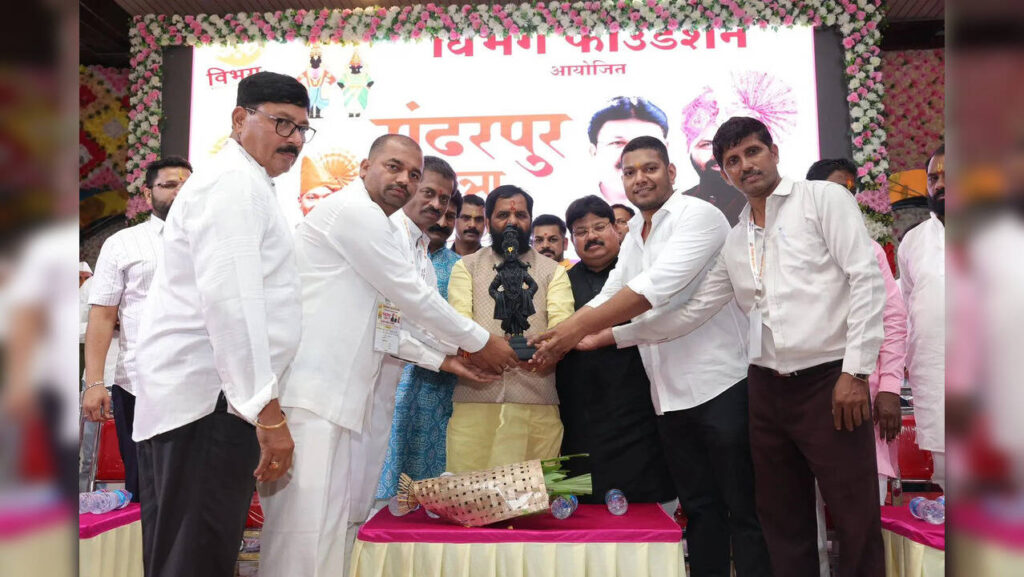The slogan “Ekach Dhyas, Raigadcha Vikas” (One Goal — Development of Raigad), echoed throughout the journey, was accompanied by coordinated public outreach and meticulous planning, raising questions about its deeper intent. Organiser Sushant Ganesh Jabre described the initiative as a symbol of social harmony and devotional solidarity, though political undertones were difficult to ignore.
Massive Participation, Devotional Offering
More than 3,000 devotees — or warkaris — participated in the pilgrimage, many of them from Mahad and surrounding villages in Raigad district. A total of 5,100 laddoos were offered as naivedya (devotional offering) to Lord Vitthal at Pandharpur, later distributed as maha-prasad among the pilgrims.
The Vibhag Foundation facilitated all travel, accommodation, and food arrangements completely free of cost, significantly enhancing its appeal and public visibility.
Devotion Meets Political Presence
Political Circles Abuzz with Speculation
Political analysts believe this was not just a religious initiative but the opening act of a broader political script. Buzz in local circles suggests that Bharat Gogawale may be preparing to introduce his son into active politics, with the pilgrimage serving as a soft launchpad.
Through such cultural and religious outreach, Vikas Gogawale appears to be building grassroots connections and brand recognition — an approach often used to consolidate local support before stepping into the electoral arena.
Public Watching: Will Devotion Translate to Development?
While the pilgrimage successfully demonstrated organisational strength, public participation, and spiritual fervour, the key question now looms — was this a show of faith, or a show of strength?
The journey to Pandharpur may be complete, but for the people of Raigad, the real test lies ahead — will this energy channel into real, visible development?
Faith has laid the path. Now it’s time for results.


